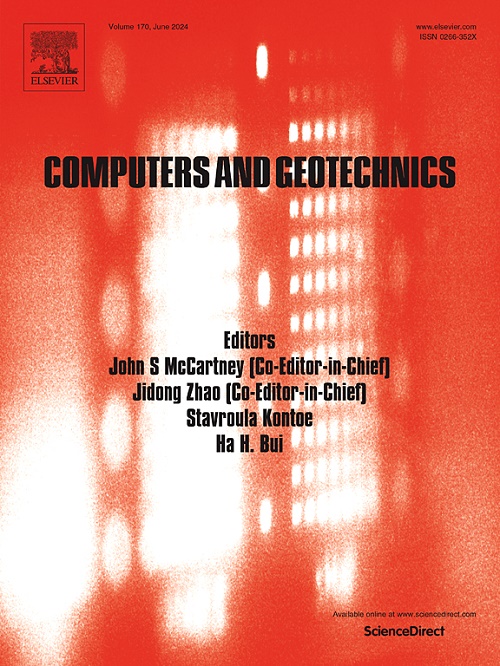Wave propagation in an ocean site considering fractional viscoelastic constitution of porous seabed
IF 5.3
1区 工程技术
Q1 COMPUTER SCIENCE, INTERDISCIPLINARY APPLICATIONS
引用次数: 0
Abstract
Wave propagation in an ocean site is an essential research topic in various scientific fields, such as offshore geotechnical engineering, ocean seismology, and underwater acoustics. Previous studies have considered the seabed soil as elastic or poroelastic, ignoring the viscoelastic characteristics of its solid skeleton. Based on the fractional-derivative viscoelastic theory and the modified Biot theory, considering the flow-independent viscosity related to solid skeleton, this paper proposes a generalized viscoelastic wave equation for a fluid-saturated porous medium. The equation has a flexible mathematical form to describe soil rheological properties more accurately through fractional order. On this basis, the total wave field equation of an ocean site, modeled as the fluid–poroviscoelastic–solid media, is established. Then an analytical solution for wave propagation in an ocean site subjected to obliquely incident P and SV waves is obtained, and its degeneration and extension are studied. The proposed method is comprehensively validated through experiment, analytical, and numerical methods. Finally, a parameter analysis is performed to investigate the effects of water depth, seabed properties (including viscoelastic parameters, fractional order and permeability), and incident angle on the seismic response of a poroviscoelastic seabed.
求助全文
约1分钟内获得全文
求助全文
来源期刊

Computers and Geotechnics
地学-地球科学综合
CiteScore
9.10
自引率
15.10%
发文量
438
审稿时长
45 days
期刊介绍:
The use of computers is firmly established in geotechnical engineering and continues to grow rapidly in both engineering practice and academe. The development of advanced numerical techniques and constitutive modeling, in conjunction with rapid developments in computer hardware, enables problems to be tackled that were unthinkable even a few years ago. Computers and Geotechnics provides an up-to-date reference for engineers and researchers engaged in computer aided analysis and research in geotechnical engineering. The journal is intended for an expeditious dissemination of advanced computer applications across a broad range of geotechnical topics. Contributions on advances in numerical algorithms, computer implementation of new constitutive models and probabilistic methods are especially encouraged.
 求助内容:
求助内容: 应助结果提醒方式:
应助结果提醒方式:


